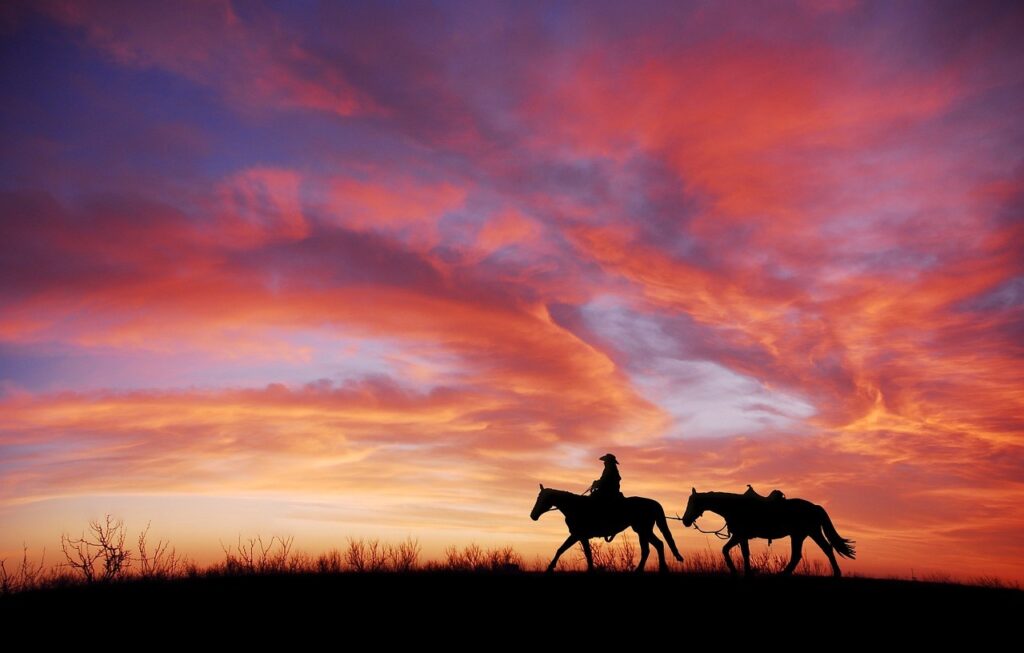The Wild, Wild West is an era, a place which is most romanticized in film and works of literature. This was a time when the Frontier was ravaged by lawlessness and individualism. A time when clashes between outlaws and lawmen constantly occurred, molding the narrative of the West as untamed and undoubtedly wild.
With this blog, we will be delving deep into the complex dynamics between those who regulated the law and those who continuously defied it in one of the most pivotal eras in the history of America.
Here’s lawmen vs. outlaws, a wild retrospective.
Lawlessness Run-A-Muck
It was the mid-19th to early 20th century, which saw one of the most turbulent eras in the history of the American West. It was a time characterized by open spaces and sparse population. This landscape became the breeding ground for outlaws and malpractice. People saw pioneers and prospectors seeking fortune in the cattle ranches and gold mines, spreading chaos and demolishing anything threatening their endeavors. Besides the sparse population, the lack of formal legislation and centralized authority contributed to the lawlessness. It was paradise for the cunning and savage.
In this debate of lawmen vs. outlaws, let’s see how each faction fared in this era.
The Lawmen: Bringing Order To The Frontier
It’s the way of the universe; where evil exists, there will always be good to rise against it. As a response to the chaos instigated by the outlaws, lawmen emerged as local sheriffs, hired gunmen, and marshals who put their lives on the line with fervor and bravery to maintain order in the land. These authorities were ridiculously under-resourced. Hence, bringing justice to the Frontier was a huge challenge to overcome. Famous names such as Wyatt Earp, Wild Bill Hickok, and Bat Masterson became legends in the field due to their commitment and dedication to bringing justice to an environment like the Frontier.
These lawmen heavily relied on personal grit, legal help, and extra-judicial methods to enforce the law. Arguably, the most talked about gunfight in the Frontier was at O.K. Corral, led by Wyatt Earp and his brothers—the battle encapsulated law enforcement’s risky and unpredictable nature regarding the Wild West.
Outlaws: The Rebels
As a vivid product of the environment cultivated due to the contest between lawmen vs. outlaws, prominent names became symbols of resistance. Figures such as Jesse James Butch Cassidy and Billy the Kid became notorious for their exploits and were also romanticized in novels and, eventually, Hollywood movies.
Outlaws further exploited the expanses of the West, using secluded hideouts and the terrain to their advantage. They developed a network of sympathizers to evade law enforcement. But what was the true motivation behind their resistance?
Simply put, their motives ranged from economic desperation to rejecting societal norms. They just wanted to break the system. Not every outlaw had the same motive, which made it particularly difficult for lawmen to stereotype and figure out behaviors among the outlaws.
Lawmen vs. Outlaws: Adapted
Where lawmen fought within the confines of legality, some outlaws were driven by personal code, with a fire of rebellion in their hearts. Occasionally, these outlaws did find themselves on the right side of justice.
This constant back-and-forth struggle and good-versus-evil narrative intrigues the general viewer. This is also why the Western plight is so heavily adapted in Hollywood and literature.
As the West was gradually won, dime novels slowly emerged as pulp fiction. These fictitious works completely exploited the lawmen vs. outlaws genre, sensationalizing it to spark public intrigue. Inexpensive publications portrayed a romantic view of the Wild West, which may or may not be inaccurate. From enthralling tales of gripping shootouts, heists, and cat-and-mouse pursuit of justice and vengeance, the creativity spoke to the readers on a deeper level.
Authors such as Prentiss Ingraham and Ned Buntline contributed heavily to creating the Western genre, bringing characters such as Buffalo Bill Cody to life within the pages. Wyatt Earp became a literary hero with Stuart N. Lake’s biography, Wyatt Earp: Frontier Marshal.
Meanwhile, Jesse James became a prominent anti-hero, where works of literature depicted him not as a criminal but as a rebel who fought against the encroachment of the system.
However, what sets Wild West literature apart from the rest of the genres is how it embraces moral ambiguity. Blood Meridian is an excellent example of this notion, accompanied by Lonesome Dove, which navigates through the complex moralities in the Frontier. These works of literary fiction provided a glaring portrayal of the human condition, blurring the lines between the outlaw and the lawman and making the audience question the very concept of justice.
These titles led to more writers exploring psychological plights in a much deeper depth. Characters fought not only with external threats but also with their internal conflicts, which made the story transcend the conventional art form.
Today, one particular author is creating a buzz in the Western genre. Author Jedediah Ravine presents Wichita, U.S. Marshall. This gripping story delivers one of the most authentic depictions of the Frontier. The novel takes place in 1878, when Wichita finds his way to Durango, Colorado, after years of serving the Texas Rangers and a short time with the Pinkerton detective agency. He leaves a life of action and adventure behind to settle down and start a family, only to have it taken from him. And, thus, commences an epic story of vengeance as Wichita follows the trail of outlaws who came to his home and left death and heartache behind.
The story is available in audiobook format and encapsulates the sights and sounds of the chaotic Wild West. The book is narrated by the wise voice of Jedediah Ravine, which adds to the overall experience.
Will Wichita be able to find justice? Only one way to find out.
Wichita U.S. Marshall isnow available on Amazon.

